EIGHT DECADES OF CUBAN FIGURATION AND NEO-FIGURATION
Eight Decades of Cuban Figuration and Neo Figuration, the exhibition at Latin Art Core curated by Dennys Matos, reviews more than eight decades of Cuban figurative and neo-figurative works through a selection of emblematic paintings and sculptures by 18 artists from different generations.

The selection covers from the late 1940s to the present day. Among them are the early avant-garde artists such as Wifredo Lam, Amelia Peláez, Mario Carreño and Rita Longa, whose figurative poetics represented the discourse of the Cuban national state and its cultural identity, marked by post-colonial complexity. The rural or urban landscape, flora and fauna are representations that combine cultured and popular elements as part of the modern project of socio-cultural development.
The triumph of the revolution in 1959 meant a radical rupture with certain values of previous cultural traditions and made these discourses more complex. Neo-figuration, as the dominant pictorial poetics, made its way into the proposals of the new generations that were going to redefine the perception of the national being and cultural identity, mediated by the ideology of the revolutionary cultural policy. In this stage of the 1960s, the works of, for example, Antonia Eiriz, Zilia Sanchez and Servando Cabrera emerge. Later, at the end of the 1970s, artists such as Mendive and Fabelo, among others, stand out, echoing an imaginary whose visual codes combine both Western and African heritage in the Cuban cultural identity. But thematically, unlike the first avant-gardes, they maintain a critical distance from these sources and heritages.
In the 1980s there is a renaissance of the visual arts, where previous generations coincide in creative intensity with younger ones, creating a rich constellation of neo-figurative painting such as, for example, Humberto Castro, or Zaida del Rio. The body, as a source of overflowing expression of desire, begins to play a leading role in pictorial symbology, responding to the homogenization of mass culture and social political repression.
The fall of the Berlin Wall in 1989 implied the failure of the revolutionary utopia and the art of these years became more parodic and, above all, more cynical. The neo-figurative poetics incorporates narrative elements from cinema and television, expanding the field of painting as in the works of César Santos, but this expansion also occurs in the field of sculpture with the work of The Merger. Alpízar and the works of Belkis Ayón parody the statements of the cultural policy of the revolution. A cultural policy that had skewed history in favor of achieving total control of the individual and society under the thick cloak of dictatorship.
Artists: Wifredo Lam, Amelia Peláez, Mariano Rodríguez, Mario Carreño, René Portocarrero, Servando Cabrera, Antonia Eiríz, Zilia Sánchez, Zaida del Rio, Rita Longa, César Santos, Rubén Alpízar, Humberto Castro, Raiman Rodríguez, Belkin Ayón, The Merger, Roberto Fabelo and Manuel Mendive.
Eight decades of Cuban figuration and neo-figuration. Group exhibition.
Until May 25, 2024.
Latin Art Core. Fine Art Gallery. 1646 SW 8th Street. Miami, Florida. United States.
May interest you

Galería del Paseo presented Screen II, the solo exhibition of Uruguayan artist Guillermo García Cruz. It is curated by Max Hernández Calvo.

Galería del Paseo presented Screen II, the solo exhibition of Uruguayan artist Guillermo García Cruz. It is curated by Max Hernández Calvo.
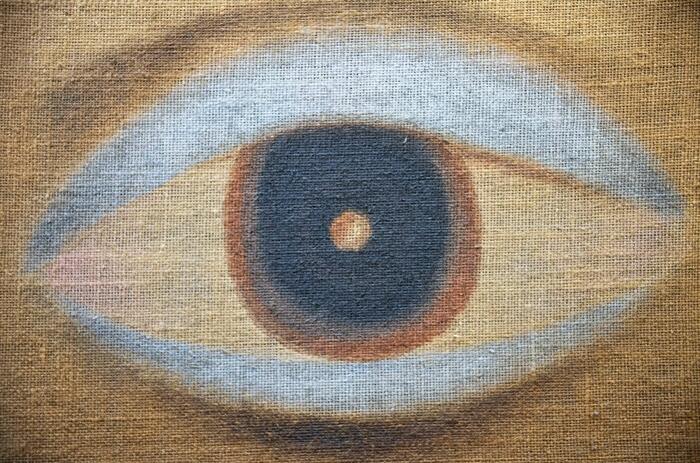
Pinta PArC closed its 14th edition with more than 200 artists and 44 galleries. From April 24 to 28, 2024 at Casa Prado, the fair brought together curators, gallery owners, artists, collectors and art lovers.
PINTA PArC 2024 AMPLIFIED THE LATIN-AMERICAN ARTISTIC EXPRESSION
Pinta PArC closed its 14th edition with more than 200 artists and 44 galleries. From April 24 to 28, 2024 at Casa Prado, the fair brought together curators, gallery owners, artists, collectors and art lovers.
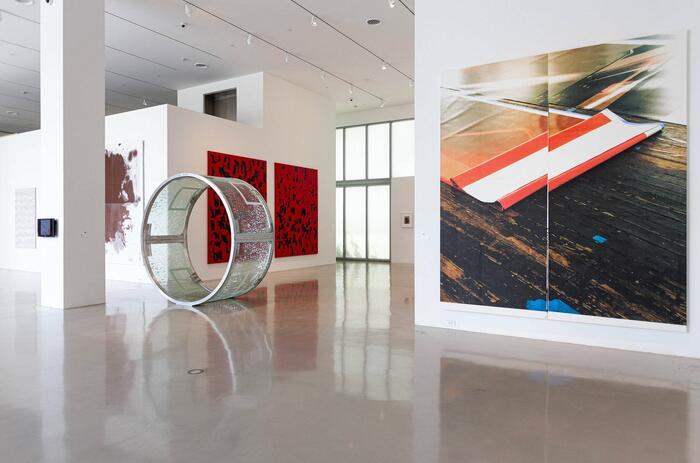
The Cuban-born, Miami-based art collector and philanthropist Rosa de la Cruz’s famous art collection will be sold over a series of auctions starting on May 2024.
DE LA CRUZ COLLECTION CLOSED ITS DOORS WITH PIECES HEADING TO AUCTION
The Cuban-born, Miami-based art collector and philanthropist Rosa de la Cruz’s famous art collection will be sold over a series of auctions starting on May 2024.

The Guggenheim Museum Bilbao presents Metahaven. Chaos Theory. This is the first exhibition of the year in the Film & Video room, a space that the Museum dedicates entirely to video art, audiovisual installation and moving image as artistic languages, and which celebrates its tenth anniversary in 2024.
CHAOS THEORY AT THE GUGGENHEIM BILBAO
The Guggenheim Museum Bilbao presents Metahaven. Chaos Theory. This is the first exhibition of the year in the Film & Video room, a space that the Museum dedicates entirely to video art, audiovisual installation and moving image as artistic languages, and which celebrates its tenth anniversary in 2024.

Lehmann Maupin presents Soil Horizon, an exhibition of new work by New York based artist Teresita Fernández. Over the course of her decades-long career, Fernández’s practice has been characterized by an expansive reimagining of what constitutes a landscape: from the subterranean to the cosmic, to contentious borderlines and borderlands.
THE INNER REALM OF MATTER: TERESITA FERNANDEZ IN NEW YORK

The Fund for Park Avenue and its Sculpture Committee have invited two artists, Betsabeé Romero and Jorge Otero-Pailos to exhibit their sculptures on Park Avenue from March through October 2024. Their eight works are presented in conjunction with New York City (NYC) Parks’ Art in the Parks program.
TRACES IN ORDER TO REMEMEBR: BETSABEÉ ROMERO
The Fund for Park Avenue and its Sculpture Committee have invited two artists, Betsabeé Romero and Jorge Otero-Pailos to exhibit their sculptures on Park Avenue from March through October 2024. Their eight works are presented in conjunction with New York City (NYC) Parks’ Art in the Parks program.
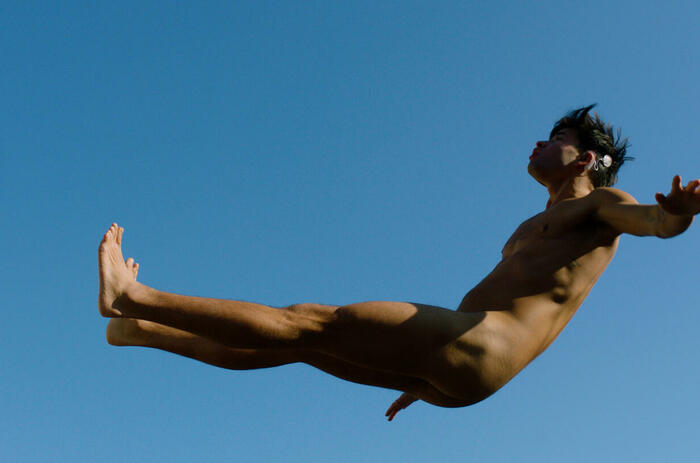
Frieze New York 2024 returns to The Shed in New York with a new curator for Focus, more than 60 galleries from 25 countries and an extensive program of events and activations. This year’s edition will be held from May 1-5.
FRIEZE NEW YORK 2024: CELEBRATING ART AND THE CITY
Frieze New York 2024 returns to The Shed in New York with a new curator for Focus, more than 60 galleries from 25 countries and an extensive program of events and activations. This year’s edition will be held from May 1-5.

The Museum of Contemporary Art Chicago presented Virginia Jaramillo: Principle of Equivalence, the first major retrospective and largest monographic exhibition to date of the work of Virginia Jaramillo.
VIRGINIA JARAMILLO’S WORK IN THE MUSEUM OF CONTEMPORARY ART CHICAGO
The Museum of Contemporary Art Chicago presented Virginia Jaramillo: Principle of Equivalence, the first major retrospective and largest monographic exhibition to date of the work of Virginia Jaramillo.

The Philip and Muriel Berman Museum of Art presents the tour of Enrique Bostelmann: Apertures and Borderscapes. The exhibition will be available from June 18 to December 15, 2024.
ENRIQUE BOSTELMANN: APERTURES AND BORDERSCAPES
The Philip and Muriel Berman Museum of Art presents the tour of Enrique Bostelmann: Apertures and Borderscapes. The exhibition will be available from June 18 to December 15, 2024.
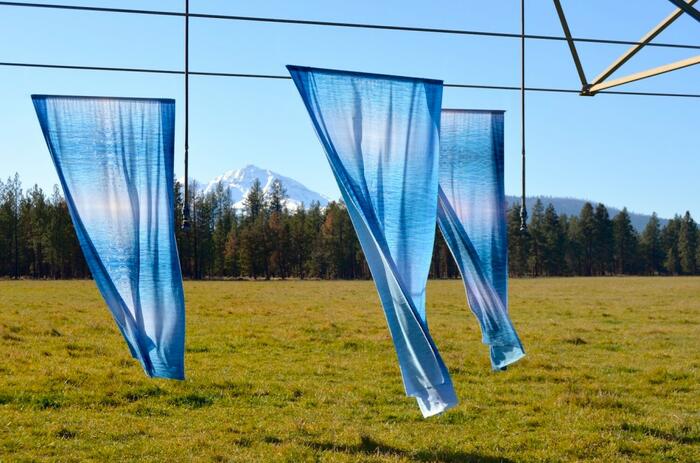
Pine Meadow Ranch Center for Arts & Agriculture (PMRCAA) is inviting artists, ecological scientists and scholars whose work explores the theme of Care & Stewardship to apply for a 2025 residency in Sisters, Oregon (USA). Deadline to apply: June 30th, 2024.
OPEN CALL FOR ARTIST-IN-RESIDENCY PROGRAM 2025
Pine Meadow Ranch Center for Arts & Agriculture (PMRCAA) is inviting artists, ecological scientists and scholars whose work explores the theme of Care & Stewardship to apply for a 2025 residency in Sisters, Oregon (USA). Deadline to apply: June 30th, 2024.
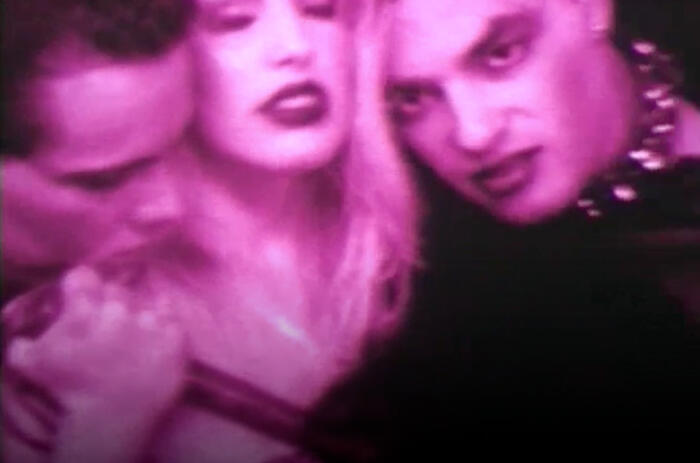
Xican-a.o.x. Body in Pérez Art Museum Miami (PAMM) is the first major exhibition to showcase work by artists who foreground the body as a site of political agency and imagination, artistic investigation, decolonization, and alternative forms of community.
BODIES AND POLITICS: A GROUP EXHIBITION AT PAMM
Xican-a.o.x. Body in Pérez Art Museum Miami (PAMM) is the first major exhibition to showcase work by artists who foreground the body as a site of political agency and imagination, artistic investigation, decolonization, and alternative forms of community.

Galería del Paseo presented Screen II, the solo exhibition of Uruguayan artist Guillermo García Cruz. It is curated by Max Hernández Calvo.

Pinta PArC closed its 14th edition with more than 200 artists and 44 galleries. From April 24 to 28, 2024 at Casa Prado, the fair brought together curators, gallery owners, artists, collectors and art lovers.
PINTA PArC 2024 AMPLIFIED THE LATIN-AMERICAN ARTISTIC EXPRESSION
Pinta PArC closed its 14th edition with more than 200 artists and 44 galleries. From April 24 to 28, 2024 at Casa Prado, the fair brought together curators, gallery owners, artists, collectors and art lovers.

The Cuban-born, Miami-based art collector and philanthropist Rosa de la Cruz’s famous art collection will be sold over a series of auctions starting on May 2024.
DE LA CRUZ COLLECTION CLOSED ITS DOORS WITH PIECES HEADING TO AUCTION
The Cuban-born, Miami-based art collector and philanthropist Rosa de la Cruz’s famous art collection will be sold over a series of auctions starting on May 2024.

The Guggenheim Museum Bilbao presents Metahaven. Chaos Theory. This is the first exhibition of the year in the Film & Video room, a space that the Museum dedicates entirely to video art, audiovisual installation and moving image as artistic languages, and which celebrates its tenth anniversary in 2024.
CHAOS THEORY AT THE GUGGENHEIM BILBAO
The Guggenheim Museum Bilbao presents Metahaven. Chaos Theory. This is the first exhibition of the year in the Film & Video room, a space that the Museum dedicates entirely to video art, audiovisual installation and moving image as artistic languages, and which celebrates its tenth anniversary in 2024.

Lehmann Maupin presents Soil Horizon, an exhibition of new work by New York based artist Teresita Fernández. Over the course of her decades-long career, Fernández’s practice has been characterized by an expansive reimagining of what constitutes a landscape: from the subterranean to the cosmic, to contentious borderlines and borderlands.
THE INNER REALM OF MATTER: TERESITA FERNANDEZ IN NEW YORK

The Fund for Park Avenue and its Sculpture Committee have invited two artists, Betsabeé Romero and Jorge Otero-Pailos to exhibit their sculptures on Park Avenue from March through October 2024. Their eight works are presented in conjunction with New York City (NYC) Parks’ Art in the Parks program.
TRACES IN ORDER TO REMEMEBR: BETSABEÉ ROMERO
The Fund for Park Avenue and its Sculpture Committee have invited two artists, Betsabeé Romero and Jorge Otero-Pailos to exhibit their sculptures on Park Avenue from March through October 2024. Their eight works are presented in conjunction with New York City (NYC) Parks’ Art in the Parks program.

Frieze New York 2024 returns to The Shed in New York with a new curator for Focus, more than 60 galleries from 25 countries and an extensive program of events and activations. This year’s edition will be held from May 1-5.
FRIEZE NEW YORK 2024: CELEBRATING ART AND THE CITY
Frieze New York 2024 returns to The Shed in New York with a new curator for Focus, more than 60 galleries from 25 countries and an extensive program of events and activations. This year’s edition will be held from May 1-5.

The Museum of Contemporary Art Chicago presented Virginia Jaramillo: Principle of Equivalence, the first major retrospective and largest monographic exhibition to date of the work of Virginia Jaramillo.
VIRGINIA JARAMILLO’S WORK IN THE MUSEUM OF CONTEMPORARY ART CHICAGO
The Museum of Contemporary Art Chicago presented Virginia Jaramillo: Principle of Equivalence, the first major retrospective and largest monographic exhibition to date of the work of Virginia Jaramillo.

The Philip and Muriel Berman Museum of Art presents the tour of Enrique Bostelmann: Apertures and Borderscapes. The exhibition will be available from June 18 to December 15, 2024.
ENRIQUE BOSTELMANN: APERTURES AND BORDERSCAPES
The Philip and Muriel Berman Museum of Art presents the tour of Enrique Bostelmann: Apertures and Borderscapes. The exhibition will be available from June 18 to December 15, 2024.

Pine Meadow Ranch Center for Arts & Agriculture (PMRCAA) is inviting artists, ecological scientists and scholars whose work explores the theme of Care & Stewardship to apply for a 2025 residency in Sisters, Oregon (USA). Deadline to apply: June 30th, 2024.
OPEN CALL FOR ARTIST-IN-RESIDENCY PROGRAM 2025
Pine Meadow Ranch Center for Arts & Agriculture (PMRCAA) is inviting artists, ecological scientists and scholars whose work explores the theme of Care & Stewardship to apply for a 2025 residency in Sisters, Oregon (USA). Deadline to apply: June 30th, 2024.

Xican-a.o.x. Body in Pérez Art Museum Miami (PAMM) is the first major exhibition to showcase work by artists who foreground the body as a site of political agency and imagination, artistic investigation, decolonization, and alternative forms of community.
BODIES AND POLITICS: A GROUP EXHIBITION AT PAMM
Xican-a.o.x. Body in Pérez Art Museum Miami (PAMM) is the first major exhibition to showcase work by artists who foreground the body as a site of political agency and imagination, artistic investigation, decolonization, and alternative forms of community.

Galería del Paseo presented Screen II, the solo exhibition of Uruguayan artist Guillermo García Cruz. It is curated by Max Hernández Calvo.

Pinta PArC closed its 14th edition with more than 200 artists and 44 galleries. From April 24 to 28, 2024 at Casa Prado, the fair brought together curators, gallery owners, artists, collectors and art lovers.
PINTA PArC 2024 AMPLIFIED THE LATIN-AMERICAN ARTISTIC EXPRESSION
Pinta PArC closed its 14th edition with more than 200 artists and 44 galleries. From April 24 to 28, 2024 at Casa Prado, the fair brought together curators, gallery owners, artists, collectors and art lovers.

The Cuban-born, Miami-based art collector and philanthropist Rosa de la Cruz’s famous art collection will be sold over a series of auctions starting on May 2024.
DE LA CRUZ COLLECTION CLOSED ITS DOORS WITH PIECES HEADING TO AUCTION
The Cuban-born, Miami-based art collector and philanthropist Rosa de la Cruz’s famous art collection will be sold over a series of auctions starting on May 2024.

The Guggenheim Museum Bilbao presents Metahaven. Chaos Theory. This is the first exhibition of the year in the Film & Video room, a space that the Museum dedicates entirely to video art, audiovisual installation and moving image as artistic languages, and which celebrates its tenth anniversary in 2024.
CHAOS THEORY AT THE GUGGENHEIM BILBAO
The Guggenheim Museum Bilbao presents Metahaven. Chaos Theory. This is the first exhibition of the year in the Film & Video room, a space that the Museum dedicates entirely to video art, audiovisual installation and moving image as artistic languages, and which celebrates its tenth anniversary in 2024.

Lehmann Maupin presents Soil Horizon, an exhibition of new work by New York based artist Teresita Fernández. Over the course of her decades-long career, Fernández’s practice has been characterized by an expansive reimagining of what constitutes a landscape: from the subterranean to the cosmic, to contentious borderlines and borderlands.
THE INNER REALM OF MATTER: TERESITA FERNANDEZ IN NEW YORK

The Fund for Park Avenue and its Sculpture Committee have invited two artists, Betsabeé Romero and Jorge Otero-Pailos to exhibit their sculptures on Park Avenue from March through October 2024. Their eight works are presented in conjunction with New York City (NYC) Parks’ Art in the Parks program.
TRACES IN ORDER TO REMEMEBR: BETSABEÉ ROMERO
The Fund for Park Avenue and its Sculpture Committee have invited two artists, Betsabeé Romero and Jorge Otero-Pailos to exhibit their sculptures on Park Avenue from March through October 2024. Their eight works are presented in conjunction with New York City (NYC) Parks’ Art in the Parks program.

Frieze New York 2024 returns to The Shed in New York with a new curator for Focus, more than 60 galleries from 25 countries and an extensive program of events and activations. This year’s edition will be held from May 1-5.
FRIEZE NEW YORK 2024: CELEBRATING ART AND THE CITY
Frieze New York 2024 returns to The Shed in New York with a new curator for Focus, more than 60 galleries from 25 countries and an extensive program of events and activations. This year’s edition will be held from May 1-5.

The Museum of Contemporary Art Chicago presented Virginia Jaramillo: Principle of Equivalence, the first major retrospective and largest monographic exhibition to date of the work of Virginia Jaramillo.
VIRGINIA JARAMILLO’S WORK IN THE MUSEUM OF CONTEMPORARY ART CHICAGO
The Museum of Contemporary Art Chicago presented Virginia Jaramillo: Principle of Equivalence, the first major retrospective and largest monographic exhibition to date of the work of Virginia Jaramillo.

The Philip and Muriel Berman Museum of Art presents the tour of Enrique Bostelmann: Apertures and Borderscapes. The exhibition will be available from June 18 to December 15, 2024.
ENRIQUE BOSTELMANN: APERTURES AND BORDERSCAPES
The Philip and Muriel Berman Museum of Art presents the tour of Enrique Bostelmann: Apertures and Borderscapes. The exhibition will be available from June 18 to December 15, 2024.

Pine Meadow Ranch Center for Arts & Agriculture (PMRCAA) is inviting artists, ecological scientists and scholars whose work explores the theme of Care & Stewardship to apply for a 2025 residency in Sisters, Oregon (USA). Deadline to apply: June 30th, 2024.
OPEN CALL FOR ARTIST-IN-RESIDENCY PROGRAM 2025
Pine Meadow Ranch Center for Arts & Agriculture (PMRCAA) is inviting artists, ecological scientists and scholars whose work explores the theme of Care & Stewardship to apply for a 2025 residency in Sisters, Oregon (USA). Deadline to apply: June 30th, 2024.

Xican-a.o.x. Body in Pérez Art Museum Miami (PAMM) is the first major exhibition to showcase work by artists who foreground the body as a site of political agency and imagination, artistic investigation, decolonization, and alternative forms of community.
BODIES AND POLITICS: A GROUP EXHIBITION AT PAMM
Xican-a.o.x. Body in Pérez Art Museum Miami (PAMM) is the first major exhibition to showcase work by artists who foreground the body as a site of political agency and imagination, artistic investigation, decolonization, and alternative forms of community.

Galería del Paseo presented Screen II, the solo exhibition of Uruguayan artist Guillermo García Cruz. It is curated by Max Hernández Calvo.

Pinta PArC closed its 14th edition with more than 200 artists and 44 galleries. From April 24 to 28, 2024 at Casa Prado, the fair brought together curators, gallery owners, artists, collectors and art lovers.
PINTA PArC 2024 AMPLIFIED THE LATIN-AMERICAN ARTISTIC EXPRESSION
Pinta PArC closed its 14th edition with more than 200 artists and 44 galleries. From April 24 to 28, 2024 at Casa Prado, the fair brought together curators, gallery owners, artists, collectors and art lovers.

The Cuban-born, Miami-based art collector and philanthropist Rosa de la Cruz’s famous art collection will be sold over a series of auctions starting on May 2024.
DE LA CRUZ COLLECTION CLOSED ITS DOORS WITH PIECES HEADING TO AUCTION
The Cuban-born, Miami-based art collector and philanthropist Rosa de la Cruz’s famous art collection will be sold over a series of auctions starting on May 2024.

The Guggenheim Museum Bilbao presents Metahaven. Chaos Theory. This is the first exhibition of the year in the Film & Video room, a space that the Museum dedicates entirely to video art, audiovisual installation and moving image as artistic languages, and which celebrates its tenth anniversary in 2024.
CHAOS THEORY AT THE GUGGENHEIM BILBAO
The Guggenheim Museum Bilbao presents Metahaven. Chaos Theory. This is the first exhibition of the year in the Film & Video room, a space that the Museum dedicates entirely to video art, audiovisual installation and moving image as artistic languages, and which celebrates its tenth anniversary in 2024.

Lehmann Maupin presents Soil Horizon, an exhibition of new work by New York based artist Teresita Fernández. Over the course of her decades-long career, Fernández’s practice has been characterized by an expansive reimagining of what constitutes a landscape: from the subterranean to the cosmic, to contentious borderlines and borderlands.
THE INNER REALM OF MATTER: TERESITA FERNANDEZ IN NEW YORK

The Fund for Park Avenue and its Sculpture Committee have invited two artists, Betsabeé Romero and Jorge Otero-Pailos to exhibit their sculptures on Park Avenue from March through October 2024. Their eight works are presented in conjunction with New York City (NYC) Parks’ Art in the Parks program.
TRACES IN ORDER TO REMEMEBR: BETSABEÉ ROMERO
The Fund for Park Avenue and its Sculpture Committee have invited two artists, Betsabeé Romero and Jorge Otero-Pailos to exhibit their sculptures on Park Avenue from March through October 2024. Their eight works are presented in conjunction with New York City (NYC) Parks’ Art in the Parks program.

Frieze New York 2024 returns to The Shed in New York with a new curator for Focus, more than 60 galleries from 25 countries and an extensive program of events and activations. This year’s edition will be held from May 1-5.
FRIEZE NEW YORK 2024: CELEBRATING ART AND THE CITY
Frieze New York 2024 returns to The Shed in New York with a new curator for Focus, more than 60 galleries from 25 countries and an extensive program of events and activations. This year’s edition will be held from May 1-5.

The Museum of Contemporary Art Chicago presented Virginia Jaramillo: Principle of Equivalence, the first major retrospective and largest monographic exhibition to date of the work of Virginia Jaramillo.
VIRGINIA JARAMILLO’S WORK IN THE MUSEUM OF CONTEMPORARY ART CHICAGO
The Museum of Contemporary Art Chicago presented Virginia Jaramillo: Principle of Equivalence, the first major retrospective and largest monographic exhibition to date of the work of Virginia Jaramillo.

The Philip and Muriel Berman Museum of Art presents the tour of Enrique Bostelmann: Apertures and Borderscapes. The exhibition will be available from June 18 to December 15, 2024.
ENRIQUE BOSTELMANN: APERTURES AND BORDERSCAPES
The Philip and Muriel Berman Museum of Art presents the tour of Enrique Bostelmann: Apertures and Borderscapes. The exhibition will be available from June 18 to December 15, 2024.

Pine Meadow Ranch Center for Arts & Agriculture (PMRCAA) is inviting artists, ecological scientists and scholars whose work explores the theme of Care & Stewardship to apply for a 2025 residency in Sisters, Oregon (USA). Deadline to apply: June 30th, 2024.
OPEN CALL FOR ARTIST-IN-RESIDENCY PROGRAM 2025
Pine Meadow Ranch Center for Arts & Agriculture (PMRCAA) is inviting artists, ecological scientists and scholars whose work explores the theme of Care & Stewardship to apply for a 2025 residency in Sisters, Oregon (USA). Deadline to apply: June 30th, 2024.

Xican-a.o.x. Body in Pérez Art Museum Miami (PAMM) is the first major exhibition to showcase work by artists who foreground the body as a site of political agency and imagination, artistic investigation, decolonization, and alternative forms of community.
BODIES AND POLITICS: A GROUP EXHIBITION AT PAMM
Xican-a.o.x. Body in Pérez Art Museum Miami (PAMM) is the first major exhibition to showcase work by artists who foreground the body as a site of political agency and imagination, artistic investigation, decolonization, and alternative forms of community.

Galería del Paseo presented Screen II, the solo exhibition of Uruguayan artist Guillermo García Cruz. It is curated by Max Hernández Calvo.

Pinta PArC closed its 14th edition with more than 200 artists and 44 galleries. From April 24 to 28, 2024 at Casa Prado, the fair brought together curators, gallery owners, artists, collectors and art lovers.
PINTA PArC 2024 AMPLIFIED THE LATIN-AMERICAN ARTISTIC EXPRESSION
Pinta PArC closed its 14th edition with more than 200 artists and 44 galleries. From April 24 to 28, 2024 at Casa Prado, the fair brought together curators, gallery owners, artists, collectors and art lovers.

The Cuban-born, Miami-based art collector and philanthropist Rosa de la Cruz’s famous art collection will be sold over a series of auctions starting on May 2024.
DE LA CRUZ COLLECTION CLOSED ITS DOORS WITH PIECES HEADING TO AUCTION
The Cuban-born, Miami-based art collector and philanthropist Rosa de la Cruz’s famous art collection will be sold over a series of auctions starting on May 2024.

The Guggenheim Museum Bilbao presents Metahaven. Chaos Theory. This is the first exhibition of the year in the Film & Video room, a space that the Museum dedicates entirely to video art, audiovisual installation and moving image as artistic languages, and which celebrates its tenth anniversary in 2024.
CHAOS THEORY AT THE GUGGENHEIM BILBAO
The Guggenheim Museum Bilbao presents Metahaven. Chaos Theory. This is the first exhibition of the year in the Film & Video room, a space that the Museum dedicates entirely to video art, audiovisual installation and moving image as artistic languages, and which celebrates its tenth anniversary in 2024.

Lehmann Maupin presents Soil Horizon, an exhibition of new work by New York based artist Teresita Fernández. Over the course of her decades-long career, Fernández’s practice has been characterized by an expansive reimagining of what constitutes a landscape: from the subterranean to the cosmic, to contentious borderlines and borderlands.
THE INNER REALM OF MATTER: TERESITA FERNANDEZ IN NEW YORK

The Fund for Park Avenue and its Sculpture Committee have invited two artists, Betsabeé Romero and Jorge Otero-Pailos to exhibit their sculptures on Park Avenue from March through October 2024. Their eight works are presented in conjunction with New York City (NYC) Parks’ Art in the Parks program.
TRACES IN ORDER TO REMEMEBR: BETSABEÉ ROMERO
The Fund for Park Avenue and its Sculpture Committee have invited two artists, Betsabeé Romero and Jorge Otero-Pailos to exhibit their sculptures on Park Avenue from March through October 2024. Their eight works are presented in conjunction with New York City (NYC) Parks’ Art in the Parks program.

Frieze New York 2024 returns to The Shed in New York with a new curator for Focus, more than 60 galleries from 25 countries and an extensive program of events and activations. This year’s edition will be held from May 1-5.
FRIEZE NEW YORK 2024: CELEBRATING ART AND THE CITY
Frieze New York 2024 returns to The Shed in New York with a new curator for Focus, more than 60 galleries from 25 countries and an extensive program of events and activations. This year’s edition will be held from May 1-5.

The Museum of Contemporary Art Chicago presented Virginia Jaramillo: Principle of Equivalence, the first major retrospective and largest monographic exhibition to date of the work of Virginia Jaramillo.
VIRGINIA JARAMILLO’S WORK IN THE MUSEUM OF CONTEMPORARY ART CHICAGO
The Museum of Contemporary Art Chicago presented Virginia Jaramillo: Principle of Equivalence, the first major retrospective and largest monographic exhibition to date of the work of Virginia Jaramillo.

The Philip and Muriel Berman Museum of Art presents the tour of Enrique Bostelmann: Apertures and Borderscapes. The exhibition will be available from June 18 to December 15, 2024.
ENRIQUE BOSTELMANN: APERTURES AND BORDERSCAPES
The Philip and Muriel Berman Museum of Art presents the tour of Enrique Bostelmann: Apertures and Borderscapes. The exhibition will be available from June 18 to December 15, 2024.

Pine Meadow Ranch Center for Arts & Agriculture (PMRCAA) is inviting artists, ecological scientists and scholars whose work explores the theme of Care & Stewardship to apply for a 2025 residency in Sisters, Oregon (USA). Deadline to apply: June 30th, 2024.
OPEN CALL FOR ARTIST-IN-RESIDENCY PROGRAM 2025
Pine Meadow Ranch Center for Arts & Agriculture (PMRCAA) is inviting artists, ecological scientists and scholars whose work explores the theme of Care & Stewardship to apply for a 2025 residency in Sisters, Oregon (USA). Deadline to apply: June 30th, 2024.

Xican-a.o.x. Body in Pérez Art Museum Miami (PAMM) is the first major exhibition to showcase work by artists who foreground the body as a site of political agency and imagination, artistic investigation, decolonization, and alternative forms of community.
BODIES AND POLITICS: A GROUP EXHIBITION AT PAMM
Xican-a.o.x. Body in Pérez Art Museum Miami (PAMM) is the first major exhibition to showcase work by artists who foreground the body as a site of political agency and imagination, artistic investigation, decolonization, and alternative forms of community.




